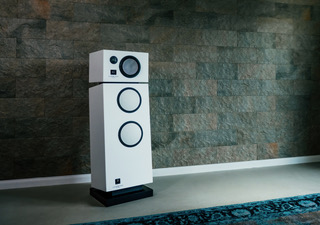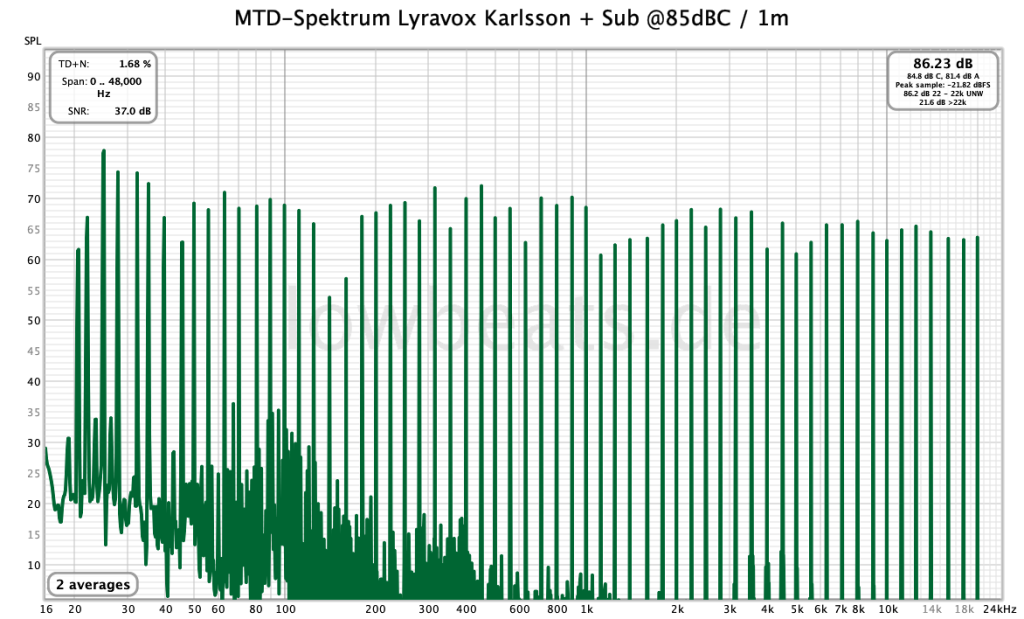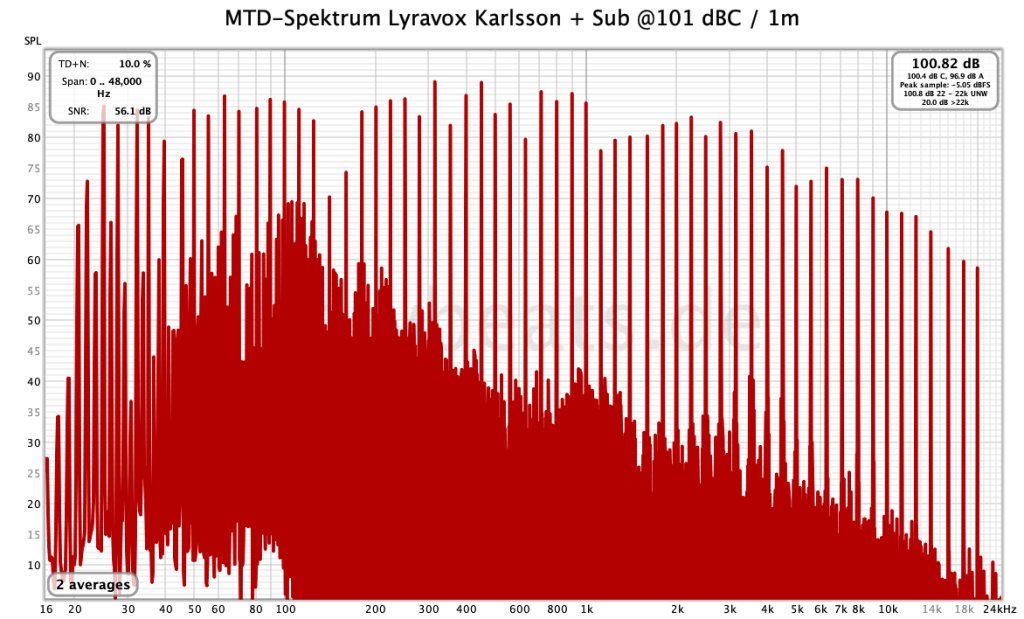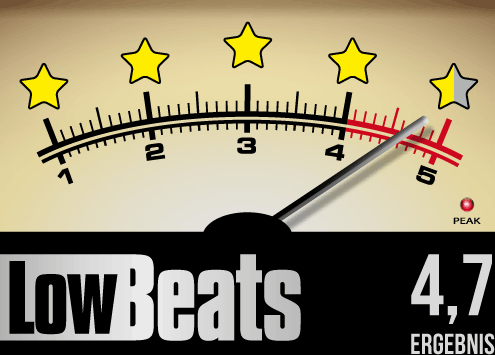When we had the Lyravox Karlsson in our listening room for a few weeks, the small active monitor (now called Karlsson Monolith) instantly won the hearts of all LowBeats ‘ colleagues. So much precision, resolution and joy of playing is rare, especially when packaged so attractively – in noble, rock-hard artificial stone. The only thing Karlsson is naturally not so good at is the lowest octaves. There is a lot coming, but not with the appropriate pressure. The Lyravox makers have now created a (still comparatively small) bass extension that elevates the Karlsson to the status of a tower. And that is to be taken literally: The Lyravox Karlsson Tower really is an uplifting experience.
“A feat”, some people will now say, referring to the price tag. The Karlsson is available from 16,000 euros, as a tower it costs at least 40,000 euros. But: Although I’m always a bit of a stranger to hi-fi components in this price range, I still consider the value of Karlsson and Karlsson Tower to be real. That’s because it’s packed with the finest ingredients. And because all these ingredients result in an enduringly delicious menu…
The special features of the Lyravox Karlsson Tower
First, a brief review of the compact monitor, which is a lot of fun on its own. The Karlsson is an active 2-way compact monitor that is available with (17,000 euros) or without an integrated DSP preamp (16,000 euros) and works as a master/slave system. At this point, I would like to refer you to our extensive individual test from June last year. The Karlsson scored almost 100% of our rating scale with 4.9 stars – which is exceptional considering its ambitious price. But I just couldn’t find a fly in the ointment. In the standard configuration, it is a superior active monitor that, with the exception of one source, needs nothing more and leaves nothing to be desired in terms of sound – also because the Lyravox team perfectly calibrates it to the respective listening room and/or the buyer’s taste.
This calibration procedure takes about a day and costs an additional 990 euros. But because the two Lyravox makers, Götz von Laffert and Jens Wietschorke, are both likeable and knowledgeable, this calibration is usually a highly entertaining process. In any case, it’s worth it: even with an enormous amount of prior knowledge, you won’t be able to get a Lyravox as spot on as the two Hamburgers – who still take the opportunity to identify one or two weaknesses in the existing chain and give helpful tips on how to improve it.
The Lyravoxers don’t even stop at venerable institutions like LowBeats: “As a precaution, we’ve connected our streamer and completely replaced the cables,” I hear them say. And before I could gruffly say anything about a recorded reference chain and the like, I had to admit (once again) that the Lyravox setup sounded a bit better than the LowBeats chain…
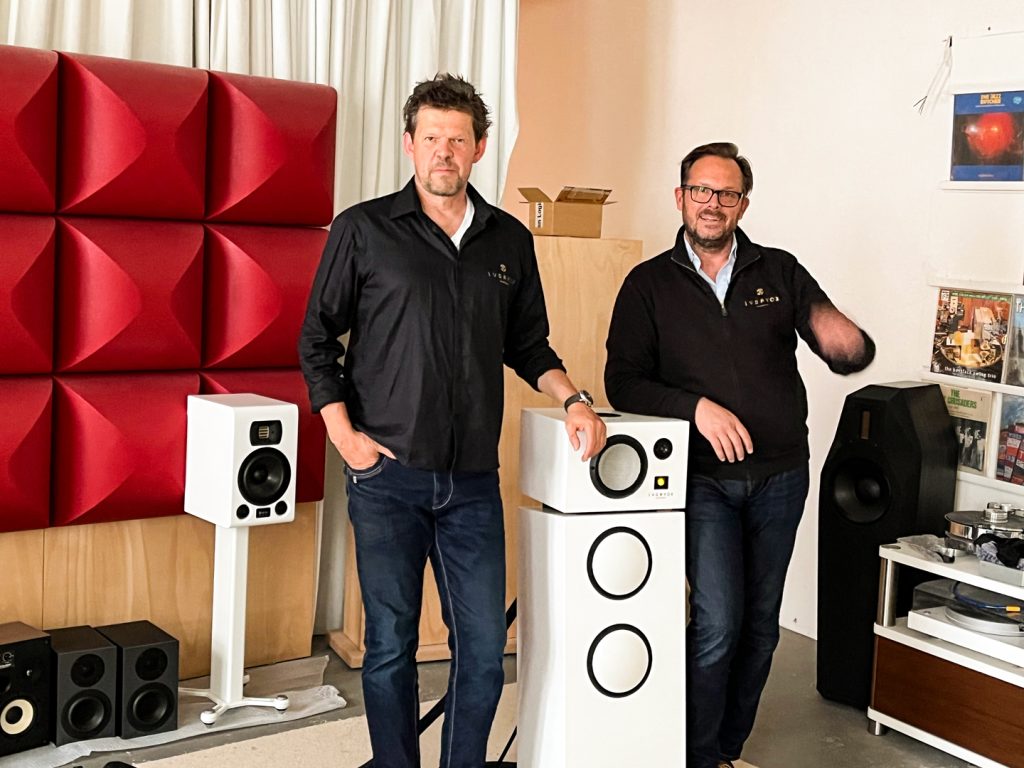
Like all Lyravox models, Karlsson is predominantly equipped with the sinfully expensive Accuton drivers from Thiel & Partner in Pulheim. These drivers have a uniquely good reputation, which is why they can be found in the best and most expensive speakers in the world. When we tested the Karlsson Monolith, we had it fitted with the classic 25 mm ceramic dome tweeter from Accuton. For the latest test of the Karlsson Tower, the Lyravox makers provided us with the D version with the diamond tweeter (Accuton Cell BD25 diamond, surcharge: 8,890 euros/pair).
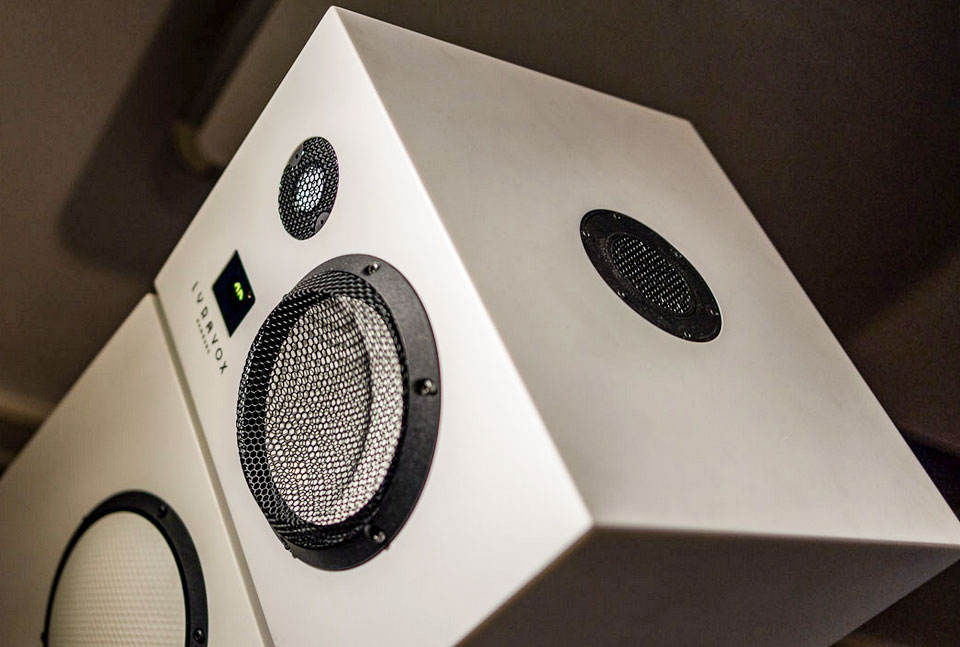
I want to deal with the subject of tweeters briefly at this point. The Diamant is certainly the better driver; in a blind test, nine out of ten experienced listeners would describe it as more discreet, finer, more open and ultimately better. But the ceramic dome tweeter – when used correctly – is hardly any worse. At times it seems a touch harder, but also more dynamic. And the fact that the diamond dome tweeter costs almost 9,000 euros extra (pair) clearly tips the pendulum in my favor of the normal ceramic dome tweeter.
And while we’re on the subject of tweeters: Dirk Vaehsen from Accuton brought up the discussion about 6 dB crossovers in the tweeter. I had to smile a little at first. The fact that some suppliers (and many hi-fi fans) see the flat 6dB filters of passive loudspeakers as almost salvific attributes – OK. But active? “Yes, there is,” says Wietschorke. “There is even a significant difference. 12 dB is grippier, more monitor-like, 6 dB is somewhat softer, smoother, more “analog”, if you like. For me personally, this is difficult to understand. But hey: this is the high end. Whatever is better is allowed and desired.
And that brings us to the Lyravox Sub, which turns the Karlsson into a Lyravox Tower, making it more complete, more superior and better. The bass section is equipped with two 19-centimeter woofers. They also come from Accuton, but their cones are not made of ceramic, but are similarly rigid due to their aluminum honeycomb structure. The two basses are complemented by a huge (30 centimeter) passive cone from Scan Speak on the back of the sub enclosure. As an alternative to a bass reflex tube (which would not have found a place in the comparatively small sub with an appropriate cross-section), it provides the final boost from below.
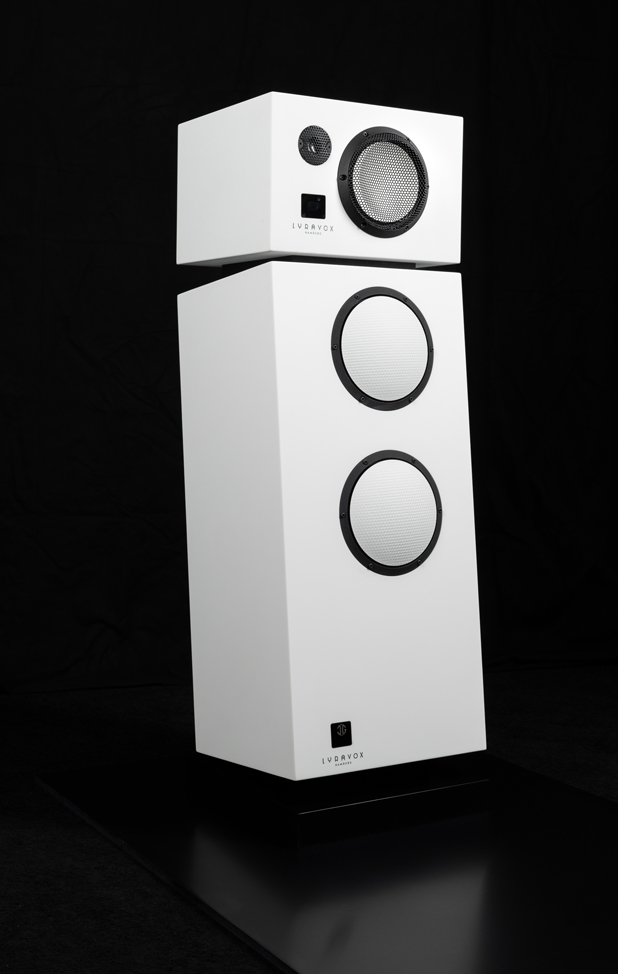
The sub extension does not turn Karlsson into a classic sub/sat combination, but rather a 3-way combination – as you can see from the high crossover frequency of 150 Hertz. Separation is at 24 dB. The high crossover frequency relieves the Karlsson’s bass-midrange driver of most of the real low-frequency work and gives it a considerable gain in level. Although the Karlsson Tower functions as a complete box in combination, it naturally still consists of two independent modules: two power cables are therefore used per channel.
The LowBeats measurements show that the tower only increases the maximum level by 3 decibels compared to the simple Karlsson (continuous level: 98 or 101 dB). However, it plays significantly lower in the bass range – down to almost 20 Hertz (Karlsson Monolith around 60 Hertz). Of course, this makes a difference to the sound…
Like Karlsson, the sub-bass section is also made of the extremely hard artificial stone called K-material. And because that’s not enough, the walls are covered with a mix of felt and sheep’s wool. In addition, there are struts – also made of K material – and internal Helmholtz resonators, which absorb all sound-relevant standing waves. Wietschorke leaves nothing to chance here – as you can tell when you tap the walls with your knuckles: these housings are close to perfection.
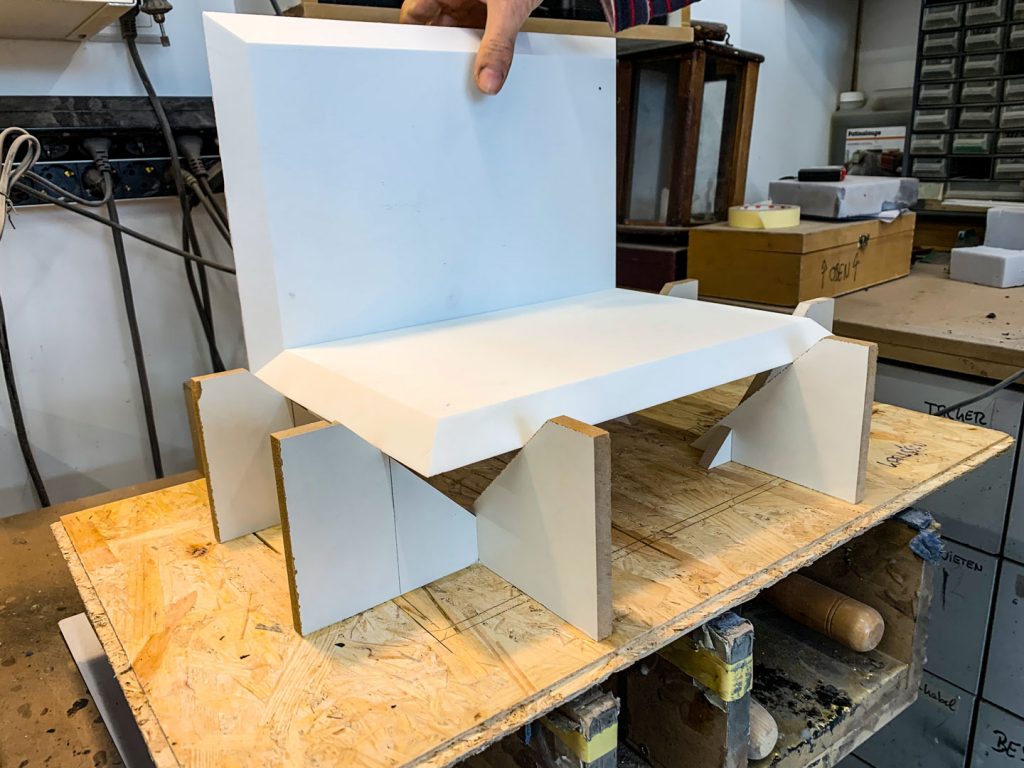
The new Lyravox K models are currently only available in black and white. Wietschorke: “Of course, we can deliver the speakers in any color. But we would have to paint over the artificial stone. But do we want to do that…?”
The K material is also available in liquid form – it could theoretically also be poured. Wietschorke uses the liquid material to bond the panels together. So at least the boxes look as if they have been cast from a single mold. This characteristic of “K” also makes it comparatively easy to repair small or large scratches.
Practice
An active system – assuming a serious design – naturally has no problems with the interaction of the power amplifier and complex crossover/driver circuit. At 1,500 watts per channel (bass: 2 x 500 watts, mid-bass: 1 x 400 watts, treble: 1 x 100 watts), the output of the four Class D NCore power amplifiers is so high that the system still has reserves in terms of power. And since the Lyravox team calibrates the tower exactly to the position in the listening room, the placement problems (which every speaker in the room has to contend with) are also significantly less than with passive speakers. With systems such as the Lyravox, the assessment of practical use therefore relates more to operation.
I have already talked about the calibration. As usual, the Karlsson Tower was calibrated in the LowBeats listening room by the Lyravox bosses. They do this really lovingly and store 3 presets for the customer to choose from. For example, if someone wants (or needs) to listen very quietly most of the time, this can be taken into account in the transfer curve by means of a kind of loudness curve. I prefer to listen a little louder in the listening room. As Wietschorke knows my way of listening to music quite well by now, he concluded with a wink: “I created preset 3 especially for you: It cracks a bit more…” This makes you look forward to the hearing test even more.
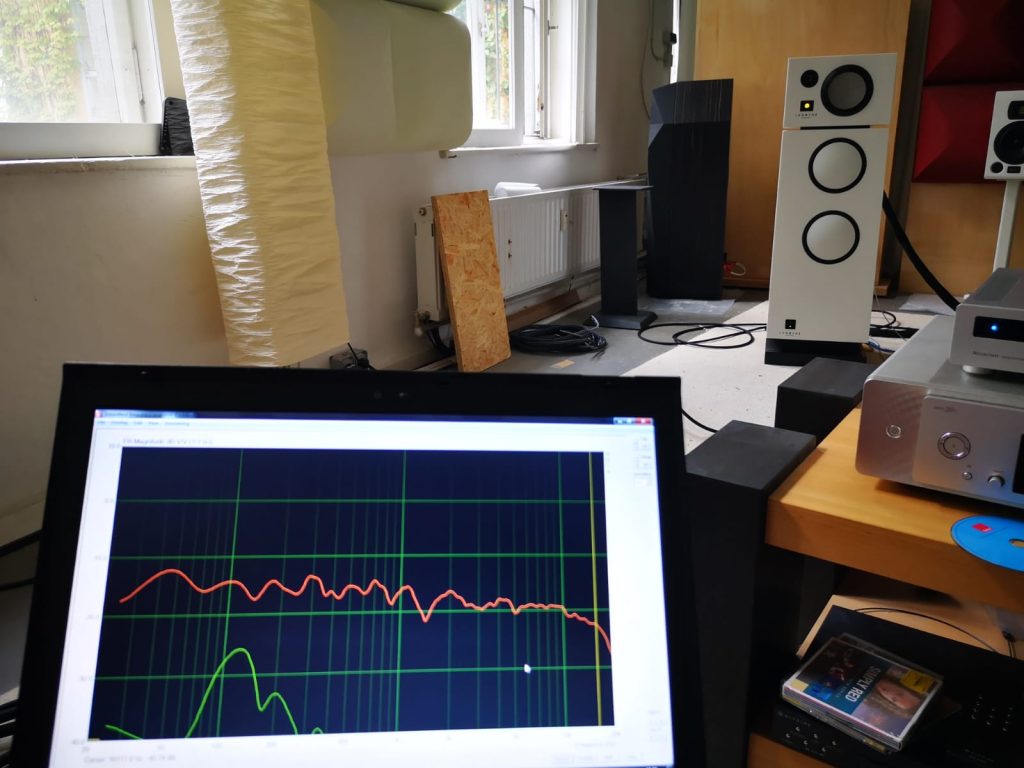
As indicated, the calibration process usually takes one day. “That might be a bit quicker,” says von Laffert, “but now we usually sell entire systems to customers – not just our speakers.”
I personally get on well with the operation of the Lyravox models: everything runs via the high-quality remote control. The Lyravox Karlsson Tower has a built-in preamplifier with up to five inputs (2 x analog, 3 x digital) that provides access to most conceivable sources. If you already have a preamp and would like to keep it, you can purchase the Karlsson Tower in the so-called “analog” version, which costs a slim thousand less. Although the term “analogue” is a little misleading here: the signal is of course also digitized in this version – otherwise the room adjustment would not be possible at all.
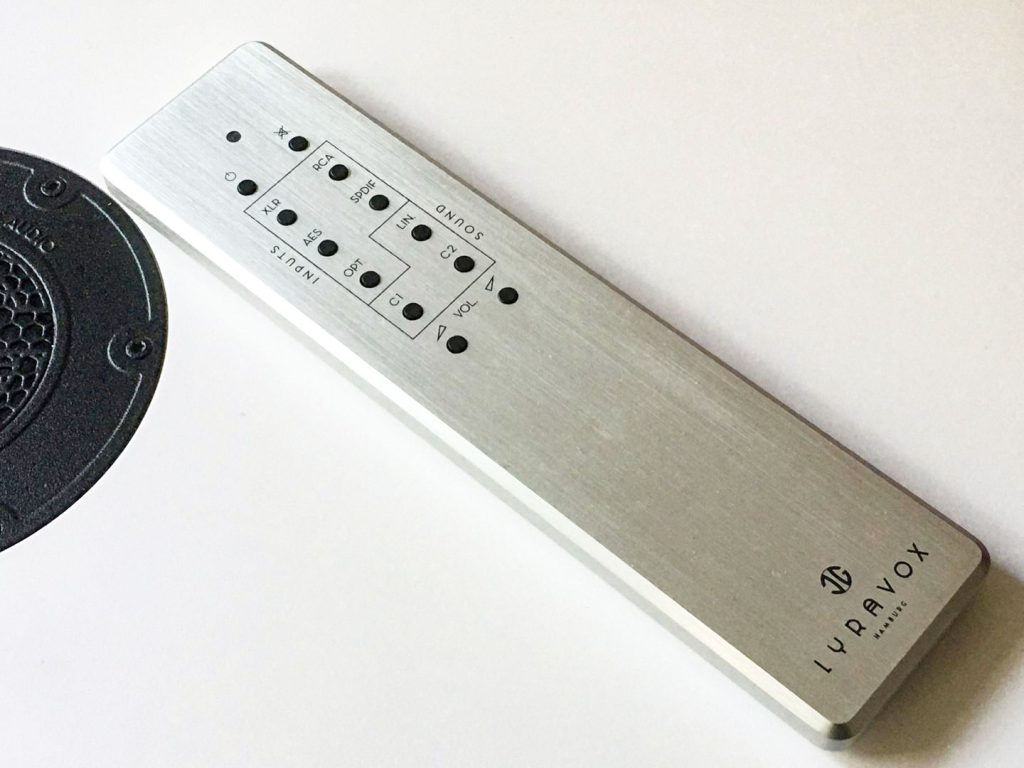
For the ultimate in modernity, the Karlsson Tower could still be considered wireless. But the two Lxyravox makers turn away from the subject in embarrassment: “not yet acceptable in terms of sound.” In this respect – and this is the only criticism from the househusband in me – the Karlsson Tower does have a lot of cables. Well, it’s just high end.
That leaves the issue of maximum level. The tower is not a really big speaker and really high levels above the 110 decibel mark cannot be elicited from it. Nevertheless, I never had the feeling that there was more to come. It is simply a gourmet box. The room size recommended by Lyravox is up to 80 square meters. It certainly works somehow, but that’s actually the wrong message. A room of up to 40 square meters and a listening distance of between 2.5 and 3.5 meters will certainly provide a much better listening experience.
Hearing test
How should one evaluate a loudspeaker system that can be modified and customized almost at will? The question always arises with such systems. At least in part. This is because you can only change the tonality by adjusting the equalizer. Qualitative aspects such as impulsiveness, phase accuracy or authentic fine and coarse dynamics can only be optimally reproduced if the basis, i.e. drivers, active electronics and housing, is right.
And you can confidently assume that here: Everything about the Lyravox Karlsson Tower is close to perfection. This also applies to the sound. The Karlsson Monolith set the bar pretty damn high in terms of playfulness, precision and fine detail. The “Sub” now added significantly more substance.
Music that seems to have been made for the tower, the recently released live album Saturday Night in San Francisco, like the legendary Friday Night in San Francisco, is a guitar spectacle of a very special kind. The way the strings flew around our ears here via Karlsson Tower was simply magnificent. Simply because of the wealth of detail, the insane precision and the absolute imaging accuracy. I can’t say it any other way: it was breathtaking, goose bumps up to the neck. The audience joins in with “One Word”, shouting and clapping. The tower also masters this with absolute aplomb. He makes all intermediate sounds audible and creates the right level towards the back – and thus the right distance between the three guitar heroes and the audience.
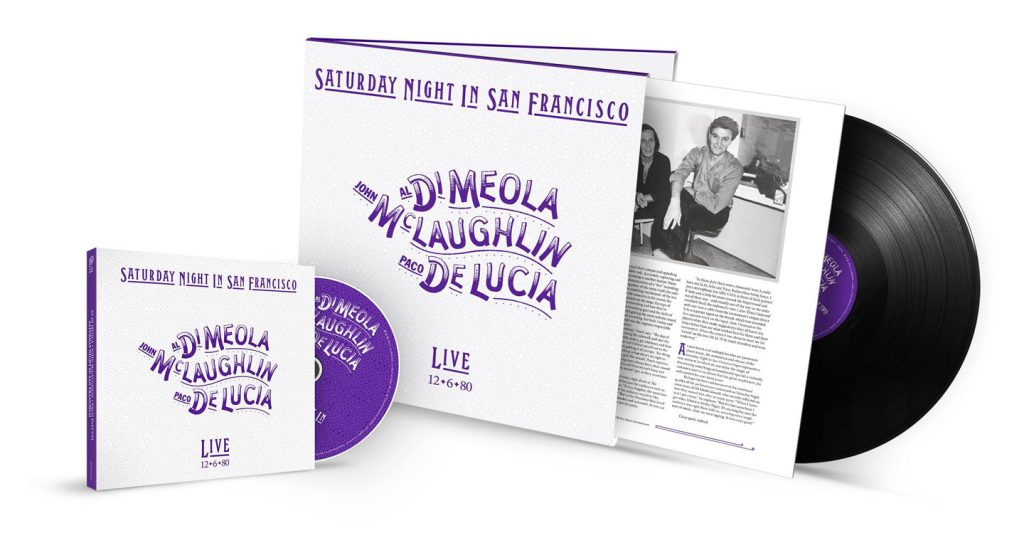
The Karlsson Monolith had already mastered this form of precise imaging quite well, but the spatial depth that the sub now brought is considerable. But also the pressure. Because I heard a lot about the Karlssson Monlith at the time, I can say that the tower pushes a lot more from below. With electronic music like that of Yello, Underworld or Felix Laband, this is absolutely fun: to hear what else is happening down there and how precisely the bass carpets are woven, where with many other (especially passive) loudspeakers you can only guess at rough structures… James Blood Ulmer’s “Crying”, which has been heard many hundreds of times and in which the heavily kicked bass drum quickly overwhelms the connected speakers, came here with incredible speed and well-dosed force. Every background noise could be heard.
At the time, I was also taken in by the Idiot Prayer by Nick Cave because the Monolith placed the bard’s fragile voice behind the piano in such a wonderfully authentic way. With the sub, the whole thing became more credible because Nick Cave was now even more sonorous, but above all the piano was much more physical in the room. The plasticity increases noticeably with the “Sub”, the power and pressure of the bass strings literally tickle the listener.
Conclusion Lyravox Karlsson Tower
The fully active monitor called Karlsson Monolith was almost perfect to my ears anyway, because it is an enormously playful precision machine. With the sub, its outstandingly fine and precise sound becomes a superior sound in all respects, because the tower can also build up the pressure from below in a frightening way and opens up the room to the rear. The bass section turns the small monolith into a full-blown loudspeaker system that even cracks the 20 Hertz mark at a decent level.
People who mainly listen quietly in smaller rooms will not be able to fully enjoy these benefits. This raises the question of whether the immense additional costs for the tower should be shouldered. Possibly not. For all those who like to listen a little louder, who love this kind of thrilling sound experience as much as I do and who – unlike me – have the necessary budget, the Lyravox Karlsson Tower leaves no questions unanswered. And no wishes.
Reviews
Sound QualityUsabilityBuild QualitySummary |
| The rating always refers to the respective price category. |
| | Extremely open, precise and refined sound with a lot of thrust in the bass |
| | Artificial stone housing with perfect finish |
| | High practicality: 5 inputs, 3 presets, on-site calibration, |
| | Only moderately level-resistant for a system of this size |
Distribution:
Lyravox Gerätemanufaktur GmbH & Co KG
Hopfensack 14
20457 Hamburg
www.lyravox.com
Price (manufacturer’s recommendation):
Lyravox Karlsson Tower (ceramic tweeter): 42,000 euros
Lyravox Karlsson Tower analog (ceramic tweeter): 40,000 euros
Lyravox Karlsson Tower D (diamond tweeter): 50,900 euros
Lyravox Karlsson Tower D analog (diamond tweeter): 48,900 euros
The technical data
| Lyravox Karlsson Tower | |
|---|---|
| Technical concept: | 3-way active monitor with integrated preamp |
| Tweeter assembly: | HT: 1 x 20 mm ceramic dome tweeter, 1 x AMT diffuse-field tweeter (cover) |
| Midrange / bass driver configuration: | TMT: 1 x 17 cm ceramic, TT: 2 x 19 cm aluminum/sandwich + 30 cm passive radiator |
| Amplifier power: | 2 x 500 watts (bass), 400 watts (TMT) + 100 watts (HT) per channel |
| max. recommended. Room size: | up to 40 square meters |
| Analog / digital inputs | analog: 1x XLR + 1 x RCA; digital: 1 x AES/EBU, 1 x S/PDIF coaxial, 1 x Toslink |
| Special feature: | On-site calibration (1,000 euros), 3 presets |
| Dimensions (W x H x D): | 35.0 x 112.0 x 35.0 cm |
| Weight: | 68.3 kilos |
| All technical data | |
More from Lyravox:
Lyravox Karlsson: the ultimate active monitor?
Test Lyravox Karlotta – active loudspeakers for aesthetes
Test Lyravox Karlina: High-end active speaker in Bauhaus guise
Test Lyravox Karlos: streaming box in retro chic
Test Lyravox SM3-150: the best soundbar in the world?



